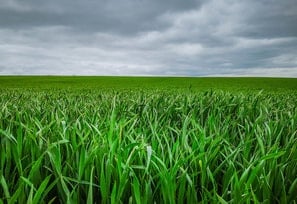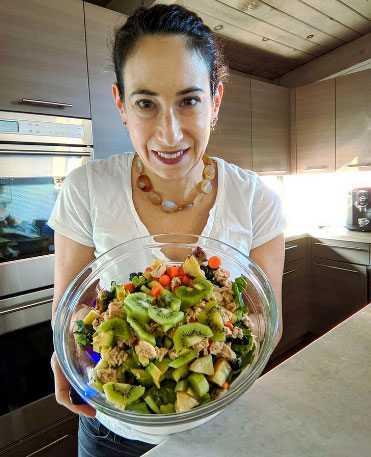
Earth Day is a time to reflect on this incredible planet we inhabit and what we can do to ensure that we protect our forever home for centuries to come. I’ve been thinking more about our planet lately as my children are becoming more interested in outer space. When I stop to think about it, it truly blows my mind that our existence on Earth is so small when compared to the vastness of space and whatever else is out there.
Climate change is so apparent, and every action we take to prevent damage to our home is a step in the right direction. Making smart choices about the food we eat can benefit the planet, because not all food is grown the same. Choosing foods that are grown or raised or fished responsibly can help reduce carbon emissions and slow down global warming. Below are things to consider when making food purchases:
1. Seek out farms that practice Regenerative Agriculture.
Regenerative Agriculture is a “holistic land management practice” that looks at the entire ecosystem when farming to provide maximum restoration to soil, water, biodiversity, and aims to reverse carbon emissions. These farms use agricultural practices to ensure that crops are grown in such a way to improve the soil and biodiversity of their land. Animals also practice rotational grazing to maintain soil richness and sequester more carbon back into the soil to offset greenhouse gas emissions. It’s organic farming but on a whole other level. Unfortunately, there is no label indicating if a farm is using regenerative practices. The best way to seek these farms out is to search online. I’ve included some mail order farms at the end of this post as a jumping off point.
2. Buy Local – Utilize your farmers market or CSA.
Purchasing locally grown foods not only supports your community but helps to reduce the carbon footprint of food traveling from farther distances. Local fruits and vegetables are picked when they are ripe and undergo less storage handling and processing to maintain their freshness. Buying local also means eating seasonally and can help to add more variety to your diet.
3. Limit Processed Food.
Processed foods source ingredients from large industrial farms that use unsustainable practices that contribute to soil erosion, water pollution, biodiversity destruction and carbon emissions through fossil fuels. The overproduction of commodity crops like corn and soybeans are repurposed into processed foods. Take a look at any ingredient label on a boxed item and you will most likely find a corn and/or soy derivative in that food. And this goes for all processed foods. Even vegan and vegetarian substitutes can be highly processed. Read your labels: the less ingredients, the better.
How can we best eat to save our Earth? Eat mostly plants. These are fantastic for your health. Know where your food is coming from. Research farms and choose those that use sustainable practices. If you choose to eat animal products, buy from a responsible farmer. Ask questions about how they raise their animals. Eat real, whole food and avoid processed food items. Your planet will thank you.
Regenerative Agriculture Farms:
Joyce Farms: https://joyce-farms.com/
Diestel Family Ranch: https://diestelturkey.com/
Primal Pastures: https://primalpastures.com/
Belcampo: https://belcampo.com/
Sources:
Stanley, P., Rowntree, J., Keede, D., DeLonge M., & Hamm, M. (2018). Impacts of soil carbon sequestration on life cycle greenhouse gas emissions in Midwestern USA beef finishing systems. Agricultural Systems,162. https://doi.org/10.1016/j.agsy.2018.02.003
Regeneration International Initiative. What is Regenerative Agriculture? Feb 16, 2017. Retrieved on April 20, 2019.
Kremen, C., Iles, A., & Bacon, C. (2012). Diversified Farming Systems: An Agroecological, Systems-based Alternative to Modern Industrial Agriculture. Ecology and Society, 17(4). Retrieved April 21, 2020, from www.jstor.org/stable/26269193


